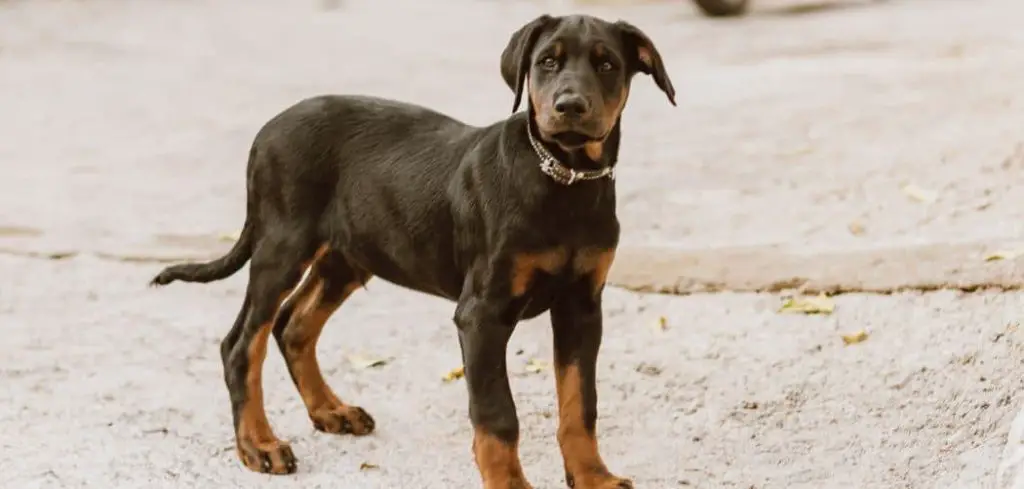It can be deeply unsettling to watch your dog pant heavily while constantly pacing around. These behaviors often indicate more than just restlessness—they may point to an underlying issue that requires your attention.
We outline the common causes of dog panting and pacing, what you can do at home, and when to seek veterinary help.
Dog Panting and Pacing — Why It Happens
When dogs pant and pace together, it typically signals stress, discomfort, or pain. These signs can stem from anxiety, gastrointestinal distress, cognitive dysfunction in older dogs, heatstroke, or even serious internal conditions like heart or respiratory disease. Since these symptoms often overlap with both emotional and physical health problems, it’s important to observe closely and act appropriately.

Common Causes of Dog Panting and Pacing
Anxiety or Stress
Anxiety is one of the most frequent causes of panting and pacing, especially in sensitive or high-strung dogs.
When a dog feels stressed—whether from loud noises, separation, unfamiliar environments, or a change in routine—they may pace and pant as a coping mechanism. This is the canine version of nervous fidgeting. You may also notice trembling, hiding, or a refusal to eat. Chronic stress can take a toll on your dog’s overall well-being, making it crucial to identify and reduce the source of their anxiety.
Gastrointestinal Discomfort
An upset stomach or abdominal pain can cause a dog to appear restless and uncomfortable.
Panting and pacing often accompany symptoms like drooling, licking lips, whining, or trying to vomit. Causes can range from mild indigestion to more severe problems like pancreatitis, bloat, or intestinal blockage. In these cases, the pacing may reflect your dog’s inability to find relief, and panting signals physical distress. Immediate veterinary attention is often needed, especially if vomiting, bloating, or lethargy occurs.
Heatstroke or Overheating
Overheating can lead to rapid panting and an agitated attempt to cool down.
If your dog has been in a warm environment, exercised intensely, or lacks access to cool water and shade, they may begin panting excessively and pacing in distress. Look for red gums, drooling, or unsteadiness. Heatstroke is an emergency—especially in brachycephalic breeds like Bulldogs or Pugs—and can quickly become life-threatening.
Read more: Dog Panting and Pacing at Night (When to worry)
Canine Cognitive Dysfunction (Dog Dementia)
Older dogs experiencing cognitive decline may exhibit unusual behaviors like nighttime pacing and panting.
Canine cognitive dysfunction (CCD) affects senior dogs in a way similar to Alzheimer’s in humans. Dogs with CCD may become confused, anxious, or restless, particularly at night (a symptom known as sundowning). This condition can cause them to pace for hours, pant even in cool environments, and appear distressed despite no obvious trigger. Medication, environmental adjustments, and routine support can help manage symptoms.
Pain or Injury
Undiagnosed pain—such as arthritis, internal injury, or nerve pain—can manifest through pacing and panting.
Since dogs instinctively hide pain, signs like panting and restlessness are subtle cues. This is especially true for joint issues, back pain, or hidden wounds. You may not see limping, but your dog’s movement and breathing patterns can tell a different story. Pain-related pacing is often accompanied by changes in behavior such as aggression, whining, or withdrawal.
Heart or Respiratory Conditions
Serious health problems affecting the heart or lungs can result in labored breathing and physical agitation.
Dogs with heart disease, respiratory infection, or collapsing trachea may pant heavily to compensate for poor oxygen flow. The discomfort might cause them to pace, unable to find a comfortable position. In these cases, additional signs like coughing, bluish gums, or lethargy usually appear. These conditions require prompt veterinary diagnosis and care.
What to Do If Your Dog Is Panting and Pacing
Start by assessing your dog’s environment: Are they overheated? Stressed? Is there a recent change that may have triggered anxiety?
Offer a calm, quiet space and cool, fresh water. If anxiety seems to be the cause, try using a calming aid or an anxiety vest. You can also distract them with gentle petting or familiar toys to ease their tension.
Check your dog’s body for injuries, swelling, or bloating. Look at their gums—are they pale, red, or blue? These clues can help you understand if something more serious is occurring.
If the behavior happens mostly at night, consider whether age-related cognitive dysfunction might be at play. Dogs with CCD often improve with structured routines and nighttime calming supplements.
Finally, avoid forcing exercise or food if your dog seems distressed. Monitor for any escalation in symptoms while preparing to contact your vet.
When to Call or Visit Your Vet
Contact your vet immediately if:
Your dog is also vomiting, drooling excessively, or appears bloated
Their panting is extreme and doesn’t ease after rest or cooling
They are showing signs of pain, such as whining or aggression
You notice coughing, labored breathing, or bluish gums
The pacing and panting last for more than an hour without an obvious cause
Chronic or recurring episodes—even if they seem mild—warrant a veterinary evaluation to rule out internal pain, cardiac conditions, or progressive cognitive issues.
Read more: Dog Panting and Not Eating (What it means)
Key Takeaway
When your dog is panting and pacing, it’s not something to ignore. These behaviors often signal discomfort, pain, or distress—whether from anxiety, digestive upset, heatstroke, or even heart disease.
Act quickly by calming their environment, checking for additional symptoms, and calling your vet if necessary. Trust your instincts: If your dog doesn’t seem right, they probably aren’t.
With a mix of care, observation, and medical support, you can get to the root of what’s bothering your furry friend and help them find comfort again.
